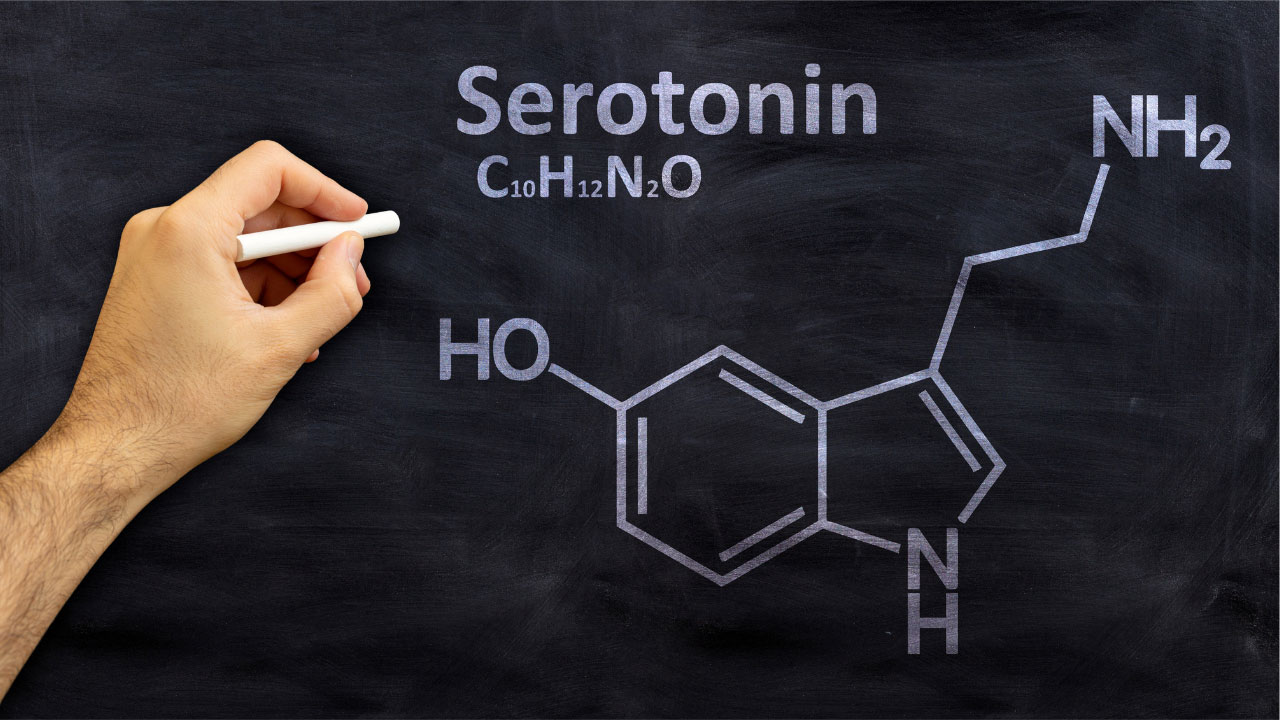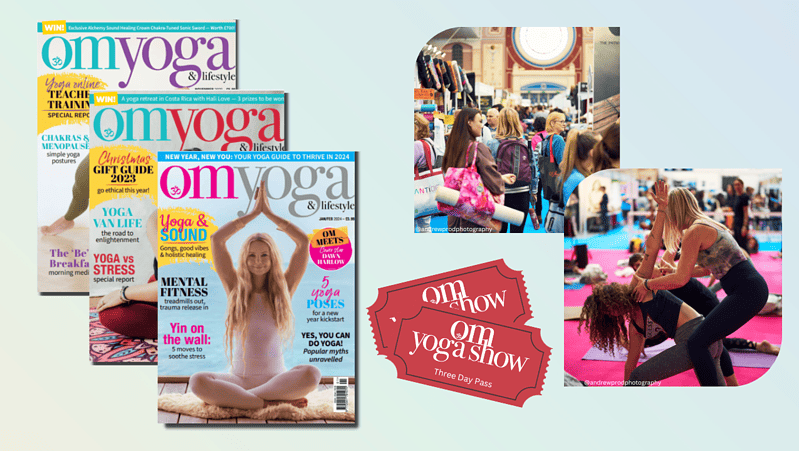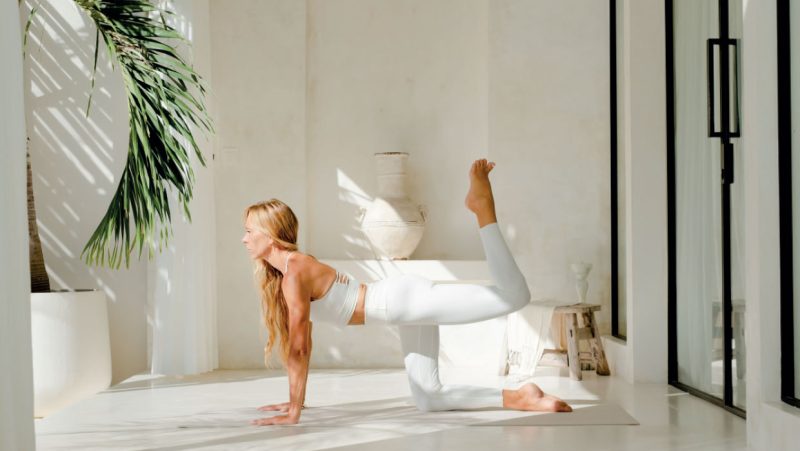
Proprioception: the magic behind yoga bliss
How the chemical release from proprioceptive input in yoga practice balances the nervous system
Like clockwork, around 40 minutes into a Power Vinyasa yoga class, about the time we lean over, and stretch into Triangle (Trikonasana), I spontaneously inhale a slow, deep breath, and a load lifts from my shoulders. Feeling at once lighter but grounded, a warm buzz trickles through me as my body flows rhythmically throughout the rest of the poses.
What’s happening halfway through class? Is it an endorphin release? Endorphins are the brain’s ‘opium’ and replace fear, anxiety and worry with a sense of euphoria — the ‘runner’s high’. Yoga practice stimulates the pituitary (third eye) gland to release endorphins.
Still, the euphoria of the runner’s high takes great effort to achieve, reportedly an hour of running or strenuous physical activity. We can achieve this state an hour or so into yoga practice but only in more advanced classes that offer huge muscle engagement from challenging inversions like Feathered Peacock (Pincha Mayurasana), and difficult arm and leg balances throughout.
Most likely, the emotional high I feel half-way through class is from a massive release of serotonin, our feel-good neurotransmitter.
Serotonin, secret of yoga bliss
Serotonin’s role in calming the nervous system is paramount. The master regulating chemical in the cortex, it sets the firing level for all other neurotransmitters to maintain stable moods.
It’s especially crucial to regulate dopamine, our reward transmitter. When dopamine is too much or too little, we become unstable. Too much dopamine leads to hyperactivity or aggression, while too little leads to poor motivation and enthusiasm. Sufficient serotonin in our brain levels dopamine so that we don’t go to either extreme.
Proprioceptive Input
If serotonin accounts for yoga bliss, what’s releasing serotonin? Proprioception, and to a lesser extent deep pressure touch from hands, feet and body pushed into the ground or wall.
Proprioception is the grand modulator of the nervous system. Located in our joints, muscles, tendons and ligaments, proprioceptive receptors give us our sense of body position and body awareness. It’s what allows us to touch the tips of our fingers together with eyes closed. The sobriety test of stretching your arm out to the side, closing your eyes, and touching your finger to your nose is a proprioceptive test.
Bringing perfect balance, proprioception calms us when we’re wired and revs us up when we’re lethargic. It does this by releasing a perfectly balanced chemical cocktail, a mixture largely of serotonin and just enough dopamine, with some endorphins thrown in.
Yoga poses and proprioceptive input
Yoga practice is replete with proprioceptive input, from changing body positions while flowing through the poses, to the compression of muscles and joints in bends, twists, turns and balancing poses involving repeated pushing (extension) or pulling (flexion). Isometric postures like Upward-Facing-Dog (Urdhva Mukha Svanasana), Bow Pose (Dhanurasana), Dancer Pose (Natarajasana), Pigeon (Eda Pada Rajakapotasana), and seated forward fold (Paschimottanasana) pull, while poses that challenge balance, like weight bearing one-legged or arm balancing poses and inversions, push.
Heavy work in yoga practice
While proprioception weaves throughout the practice, the serotonin rush comes from heavy work. Heavy work is intense input into the joints and muscles that we get from activities like rock climbing or pushing furniture. Weight bearing balancing poses constitute heavy work.
In balance postures and in inversions, our body weight is pushed into the ground forcing us to use muscles against gravity. Take a pose like Dancer (Natarajasana). Standing on one leg, arm extended back holding our other leg, strongly engages the proprioceptors with much input into the ankles, knee, hip flexors, wrists, and shoulders. Additionally, the pose requires significant strength to remain grounded as we extend our arm and leg outward.
While balancing on one leg in poses like Dancer places deep pressure into the bottom of the foot, balancing on arms places deep pressure into the palms. With all this input, imagine the calming rush in a pose like Firefly (Tittibhasana)! Not only are we balancing on our hands, but it takes great energy to lift our pelvis while bringing our thighs parallel to the floor and requires a strong core, hip flexors, and arms.
Strenuous yoga gives a serotonin pow
In a strenuous class like Power Vinyasa, we get more than 20 minutes of heavy work from challenging poses, including balancing on one leg, hand balancing, and inversions. These poses provide a serotonin pow that translates into yoga bliss. The more strenuous the class, the longer the after-class buzz. For me, that’s around two hours following Power Vinyasa yoga.
I don’t experience the same rush halfway through Iyengar, or Kundalini. Kundalini poses involve less muscle engagement than Vinyasa. In Iyengar, there’s much muscle engagement but the time between poses as the teacher explains the next pose and needed props are set up likely dilutes the chemical release.
All this proprioceptive input and serotonin release makes yoga practice an ideal way to get to that ‘all’s right in the world’ place. Who needs Prozac, booze, or coke when we can hit the mat in a challenging Vinyasa class!







